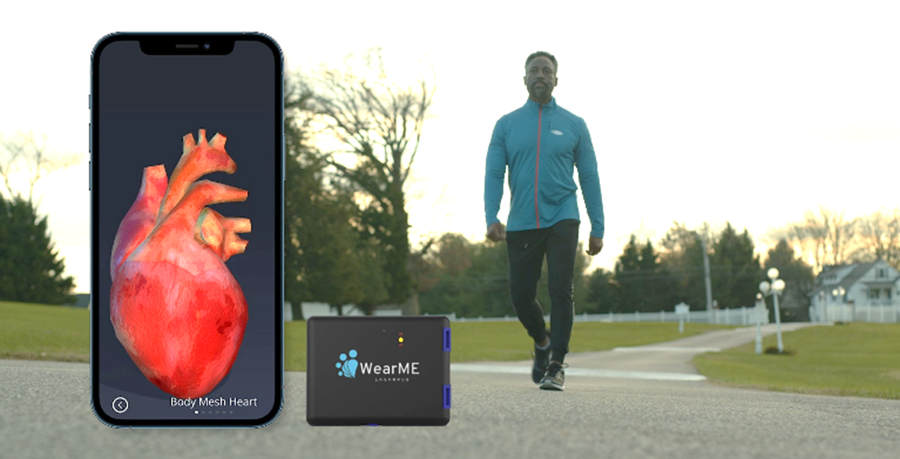
Backed by funding from Intel and the National Science Foundation, LASARRUS develops new, innovative devices to improve physical therapy outcomes for victims of stroke or joint injuries. Its patent-pending wearable technologies enable a unified method for physical therapy rehabilitation through multi-modal sensing in a body-worn mesh network – powered by Digi XBee® Zigbee® modules.
Rethinking Physical Therapy for Stroke Victims
Every year in the U.S., more than 800,000 people suffer a stroke – about once every 40 seconds – making it the leading cause of permanent disability and a major factor in the nation’s rising costs of healthcare. It falls to skilled and caring physical therapists to work with those stroke victims to recover motor function, regain muscle tone, and improve their rehabilitation outcomes.
A major portion of the PT’s time – estimates range from 33-50% – is devoted simply to documenting patient encounters, which provides a basis for demonstrating progress to payors and improving overall outcomes. That process involves measuring a range of metrics, including vital signs, body position, and muscle strength.

When Lloyd Emokpae was undergoing orthopedic physical therapy, he saw an opportunity to radically improve the process. He and his brothers – Roland, Nelson, and Edward – soon formed LASARRUS Clinic and Research Center LLC, a company with a mission to transform physical therapy through innovative networked wearable devices that capture, record, and transmit patient data to improve physical therapy outcomes and accelerate reporting.
 The company’s flagship product, LASARRUS (an acronym for Limb Activation Stimulation And Robotic Rehabilitation Unencumbered Services), uses battery-powered sensors configured to capture biometrics such as acoustic cardiography (through a built-in microphone), EKG, temperature, body position, and more. These sensors connect to Digi XBee modules configured in a mesh network.
The company’s flagship product, LASARRUS (an acronym for Limb Activation Stimulation And Robotic Rehabilitation Unencumbered Services), uses battery-powered sensors configured to capture biometrics such as acoustic cardiography (through a built-in microphone), EKG, temperature, body position, and more. These sensors connect to Digi XBee modules configured in a mesh network.
A Wearable Device Connected through Digi XBee 3
The linchpin of the LASSARUS WearME (“Wearable Multimodal Electroacoustics”) is its ability to incorporate Zigbee mesh and Bluetooth networking protocols and configurations to achieve its unique functionality. According to Nelson Emokpae, one of the co-founders, the Digi XBee 3 wireless module is the key.
Built on industry-leading technology, pre-certified Digi XBee 3 modems will enable LASARRUS engineers to quickly and easily add wireless connectivity to their flagship wearable shirts and pants with the flexibility to switch between multiple frequencies and wireless protocols as needed. Digi XBee 3 is ideal for moderate bandwidth (typically < 25 MB/month) and low-cost IoT applications. With Digi Remote Manager®, Digi XBee 3 modules can be easily configured and controlled from a central platform. Built-in Digi TrustFence® security, identity and data privacy features use multiple layers of control to protect against new and evolving cyber threats.
“Digi XBee 3 controls the communications of our body area sensor network,” Nelson said. “I used XBee 3 in grad school, so I was very familiar with its ability to support Zigbee mesh and Bluetooth. And the power consumption is very small – which is important for a wearable device.  Now, we can interrogate the sensors, collect the data from the network, and send it to a mobile platform using Bluetooth. Encryption was another key requirement, because this is health data and we must be sure to protect it.”
Now, we can interrogate the sensors, collect the data from the network, and send it to a mobile platform using Bluetooth. Encryption was another key requirement, because this is health data and we must be sure to protect it.”
Each shirt has pockets to hold the sensors, and each sensor has its own XBee 3 component, acting as a node that can communicate with other nodes in the shirt. During the patient encounter, the physical therapist has access to this FDA-approved device to capture a range of data about the patient’s vital signs and PT compliance.
A Wearable for the Pandemic Era
“In the in-patient clinical setting, we want to provide a tool that helps PTs treat patients better. That has always been our focus,” Nelson said. “But in the era of COVID-19, fewer patients or clinicians want to have in-person patient encounters, and we’re seeing other, stronger clinical needs today. We’re recognizing that the LASARRUS WearME can play an important role in fighting the pandemic from a telehealth perspective.
“First, patients can wear our device from home and enable the clinician to quickly obtain a complete physiological assessment. That will improve patient outcomes without exposing them to unnecessary risk. But we’re also exploring ways to use our device to actually remotely diagnose COVID-19 symptoms. For instance, we can listen for breathing irregularities and record temperature and cardiac data. If symptoms are present, we can refer the patient for testing and care.”
However, even after the pandemic lessens, there will still be additional use-cases for telemedicine. “Some patients may be uninsured or underinsured,” said Nelson. “Since they’re paying out of pocket, telehealth becomes more financially attractive, and LASARRUS can provide a great option for consumers to self-monitor their progress. We even foresee consumers using our solution for personal fitness tracking and monitoring.”
The LASARRUS project launched with seed capital through a Kickstarter campaign to support clinical testing of the WearME solution and production. “Our aim is to get 700 users, which requires 2,100 XBee 3 modems,” Emokpae explained. “Once we clear that hurdle, we look forward to in-clinic and telehealth applications that can have a major impact on the quality of PT care.”